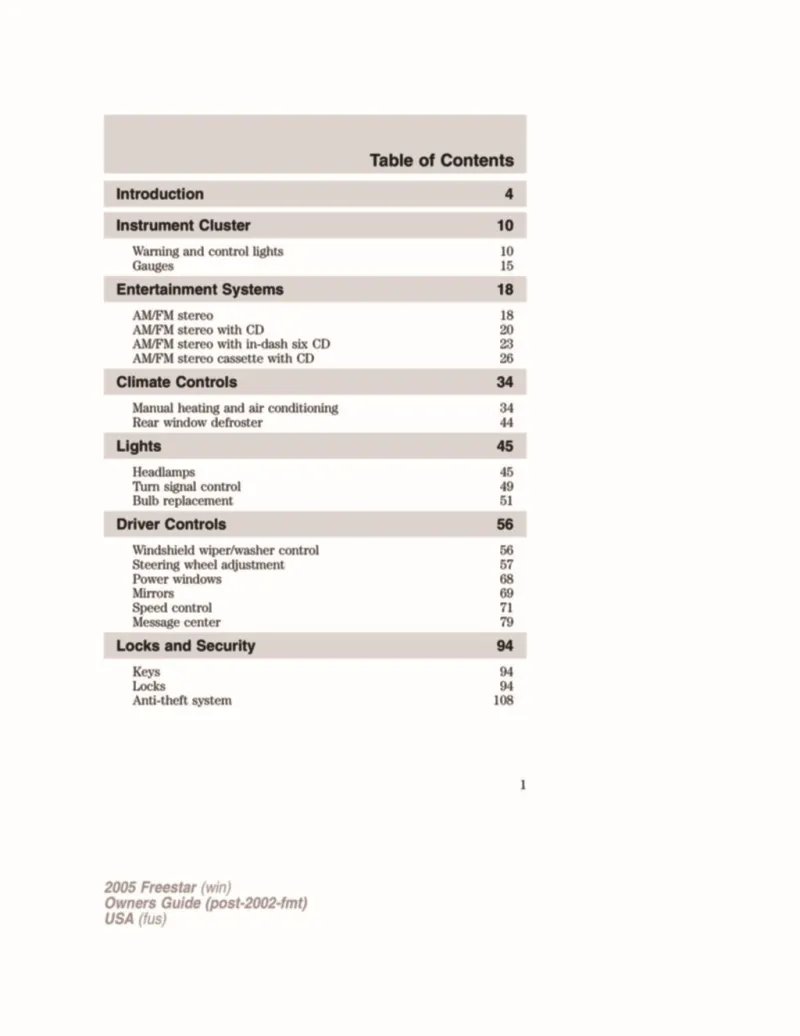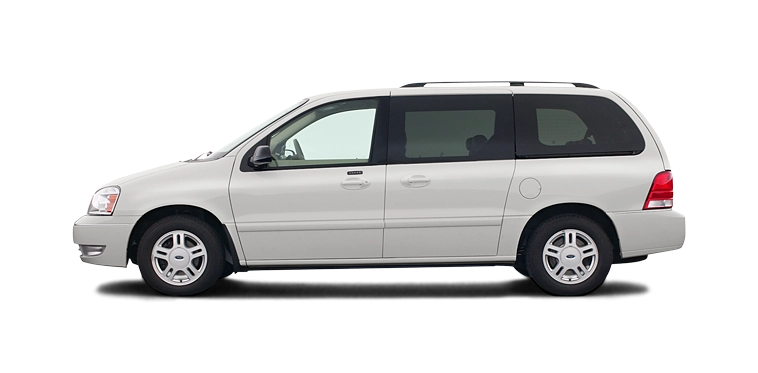2005 Ford Freestar Owner's Manual

Table of Contents
2005 Ford Freestar Overview
Introduction
The 2005 Ford Freestar is a versatile minivan designed to cater to the needs of families and individuals seeking a spacious and comfortable ride. Known for its generous interior space, user-friendly features, and reliable performance, the Freestar stands out as a practical choice in the crowded minivan marketplace. With a focus on safety and convenience, the 2005 model year incorporates several enhancements that make it both a functional and enjoyable vehicle for daily driving or long road trips.
Powertrains
Under the hood, the 2005 Ford Freestar offers two robust engine options. The base model is equipped with a 3.9-liter V6 engine that delivers 193 horsepower and 239 lb-ft of torque, providing a smooth and confident driving experience. For those seeking a bit more power, a 4.2-liter V6 engine is also available, generating 201 horsepower. Both engines are paired with a smooth-shifting four-speed automatic transmission, which ensures seamless gear transitions and enhanced fuel efficiency, making the Freestar a capable performer on various terrains.
Trims
The 2005 Freestar comes in several well-equipped trims, including the base model, SE, and the higher-end Limited. Each trim level is designed to offer a blend of comfort, style, and practicality. The SE trim adds features like dual sliding doors and an upgraded sound system, while the Limited trim boasts luxurious touches such as leather seating, a rear DVD entertainment system, and advanced climate control, making it perfect for family outings.
Features
Inside the 2005 Ford Freestar, owners will find a thoughtful array of features aimed at enhancing convenience and safety. Standard features include power windows, remote keyless entry, and a full range of airbags. Higher trims come with additional amenities such as a premium audio system, navigation, and power-adjustable front seats. With ample cargo space and versatile seating configurations, the Freestar easily accommodates family gear, making every trip more enjoyable.
Owners Manual
The 2005 Ford Freestar's owners manual is an essential guide for owners, offering valuable information on vehicle operation, maintenance schedules, and safety features. It serves as a comprehensive resource, helping owners navigate their minivan's features while ensuring longevity and reliability through proper care and upkeep. From troubleshooting tips to understanding the warranty, the manual equips Freestar owners with the knowledge needed to make the most out of their driving experience.
User manual download
The Ford Freestar owner manual for the 2005 model year is to be found in PDF downloadable format on this page. The owner manual for the model year 2005 is free and in English, but the repair manuals are usually not easy to get and may cost more.
Manual Questions
Fill the form below and someone will help you!

